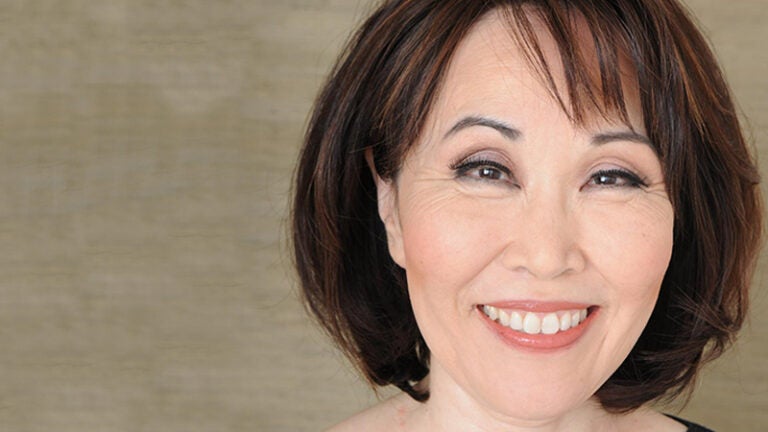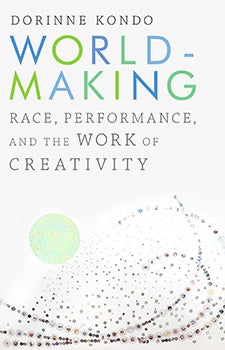
Why seeing marginalized communities in pop culture matters
It was just four years ago that the social media hashtag #OscarsSoWhite was trending, helping to spark a national outcry regarding the lack of diversity in Oscar-nominated films and Hollywood in general. But it’s not just the film and TV industry that fail to represent the diversity of our society, it’s most forms of popular culture. Can this be dismissed as “identity politics”? Why should we care?
The author of a new book on marginalized communities and the arts, USC Dornsife College of Letters, Arts and Sciences Professor of Anthropology Dorinne Kondo answers questions on the topic.
Popular culture’s lack of representation of marginalized communities — for example, ethnic and religious minorities and LGBTQ people — has drawn criticism from some, while others dismiss those concerns as “identity politics.” What’s your take?
I argue in my new book Worldmaking: Race, Performance, and the Work of Creativity (Duke University Press, 2018) that we all need to be “mirrored” in the public sphere (popular culture, media, arts, etc.) to be considered a fully human, fully social being.
Identities are formed by watching sports, theatre, TV, and YouTube; by playing video games, dancing, and listening to music. Those are more than just forms of entertainment, they stage “visions of possibility” for what and who we can become. Because marginalized populations have fewer role models in the workplace and society in general, we need more expansive and generous visions of possibility that tell stories of people from different races, genders, sexualities, classes, abilities, cultures. Everyone should have the opportunity to be recognized as fully human.
Four years ago the hashtag #OscarsSoWhite was trending. How do you feel about the progress in the movie industry since then?
I have yet to see a systematic study of representation in film for 2018; in 2017, the statistics were still daunting and dispiriting. The majority of lead actors, directors, cinematographers, composers, remain overwhelmingly white and male.
We did see some landmark films in 2018: Crazy Rich Asians, though it was not nominated for an Oscar, featured a majority Asian/Asian-American cast and director in a major Hollywood film. As an Asian-American viewer, I wept with surprise and delight at the spectacle of talented Asian-American actors in a well-financed, mainstream film.
And of course, we have the groundbreaking, deeply compelling Black Panther, with its African/African-American cast, director, and creative team, which is nominated for six Oscars. I’m especially rooting for brilliant costume designer Ruth Carter!
Both films were cultural phenomena, and I hope their financial and critical success prevents studios from arguing that films featuring actors of color in lead roles won’t draw large audiences. Spike Lee did receive a long-overdue Oscar nomination for Best Director and his film BlacKkKlansman was nominated for Best Picture.
On the other hand, the predictably palatable “racial reconciliation” movie Green Book was nominated this year for a best film Oscar, while Barry Jenkins’s ravishingly beautiful and chilling If Beale Street Could Talk was not (though it did receive nominations for Best Supporting Actress, Score, and Screenplay). A step or two forward, at least a step back.
Which popular culture art form – theater, film or television – is doing the best in terms of representation and which do you think has the most work still to do?
Honestly, it’s hard to single out any art form as being markedly better than another. Anecdotally and subjectively — again I have not been able to find reliable data from the last year — it strikes me that television, with the proliferation of streaming services, is taking chances and pushing representation forward. I’m thinking of young-adult films and TV shows, such as Netflix’s All the Boys I’ve Ever Loved, with an Asian American young woman as the lead and its TV series 13 Reasons Why, which has a kind of effortless diversity among actors who play students, teachers, and parents — though it featured a variation on the “magical Negro” character: a “magical gay Latinx” figure.
I am bereft that Netflix cancelled Luke Cage, a stylish and visually gorgeous series (The vivid array of greens! The saturated color palette!) about the bulletproof African-American Marvel hero. That there are also network series featuring lead actors of color is a plus: Blackish, Black Lightning, Jane the Virgin, Fresh Off the Boat, among others.
Theater in Los Angeles in the last two years seems slightly more open; Center Theatre Group’s 50th anniversary season in 2018 featured a majority of plays by playwrights of color. That was a first. This season remains reasonably diverse, but currently, for example, the season includes plays like Tracy Letts’s Linda Vista — a well-crafted but problematic play about yet another white man-boy in mid-life crisis, who uses women (including an Asian-American woman) to discover himself. Not again!
Nationally, the most-produced playwright remains Shakespeare; in 2017 the 10 most produced playwrights did include respectable representations of women and people of color. Lauren Gunderson, a white woman, was the most produced. In 2018, it was Lucas Hnath, a white male. So the question is: Even if we see progress in one year, does that signal a temporary improvement or a fundamental change?
Finally, just to clarify: I am not saying that all plays written by white men are by definition “bad.” Rather, my argument is that we need more diverse protagonists and creative visions on our stages and screens.
Do you see a connection between the arts and major political issues such as immigration policy, detentions or the Black Lives Matter movement?
The political issues of today are directly related to the plush seats of the theater, the symphony, the ballet, and to the pristine, white space of the art gallery. The vision of white, European bodies as the “universal human being” helps to justify our preferences for “immigrants from countries like Norway” and our denigration of other nations as “s—hole countries.”
Seeing bodies that are racialized, gendered and sexualized in ways different from the European/white/straight/male bodies who dominate the stage offers a broader vision of the human that can expand our political perspectives. We’ve still got a long way to go for that diversity to be fully represented.
Currently, for example, Misty Copeland and Calvin Royal III are the first African-American pair to be principal dancers in lead roles for American Ballet Theatre. We must work to diversify representation so that the era of “firsts” is long past.

You’re not just an anthropologist, you’re a playwright and a dramaturge — someone who acts as a third eye between director and playwright. How has that diverse background influenced your criticism and study of the arts?
I see the worlds of theater, film, television and high culture as connected intimately to the social world and to our inner psyche. Making progressive change in one world can help us transform the others.
And unlike most theater critics or cultural studies scholars, I approach the theater world as a cultural anthropologist who has participated actively in the worlds I study. Access to the rehearsal room allows me to appreciate the pressures, joys and constraints that shape artistic collaboration and creative processes. Making art is a form of cultural work; it is not simply the spontaneous outpouring of creative genius.
My anthropological “participant observation” allows me to make the familiar strange, to illuminate unexamined assumptions circulating in the world of theater and the arts: for example, that the arts are transcendent and express the noblest aspects of the human spirit. That means looking at issues like the role of race, gender, class, sexuality on the economics of the theater industry. And it leads me to question who is chosen to represent a supposedly “transcendent” humanity.
Worldmaking combines creative and critical work, a move that is innovative in the academy. It’s shaped like a play or musical, with an overture and entr’actes (short, first-person vignettes), and divided into acts. Act Three is my full-length play “Seamless,” about the afterlife of the historical trauma of Japanese-American internment in World War II — the hauntings of the present by the past.
What do you hope readers gain from Worldmaking?
First, I want people to learn what makes theater unique and distinctive — the power of live bodies and live performance! Second, I hope they gain an understanding of the economic, racial and gendered hierarchies of the theater industry; it’s hard to make a living as a playwright, unless you move to television (where, indeed, many playwrights now work).
Finally, I hope they come to understand race as a social construction that goes far beyond individual prejudice. Race is made/unmade/remade daily in our everyday assumptions, interactions, policies and, certainly, in artistic practice. Race, gender and sexuality make us, even as we construct them.
What inspired you to write the book in the form of a play?
I wanted form to mirror content. Since I’m writing about drama, why not use some of the techniques of playwriting to enliven academic prose?
Theater moves people. Emotions, bodies, are critically important aspects of our lives — we are body-minds, not just disembodied brains.